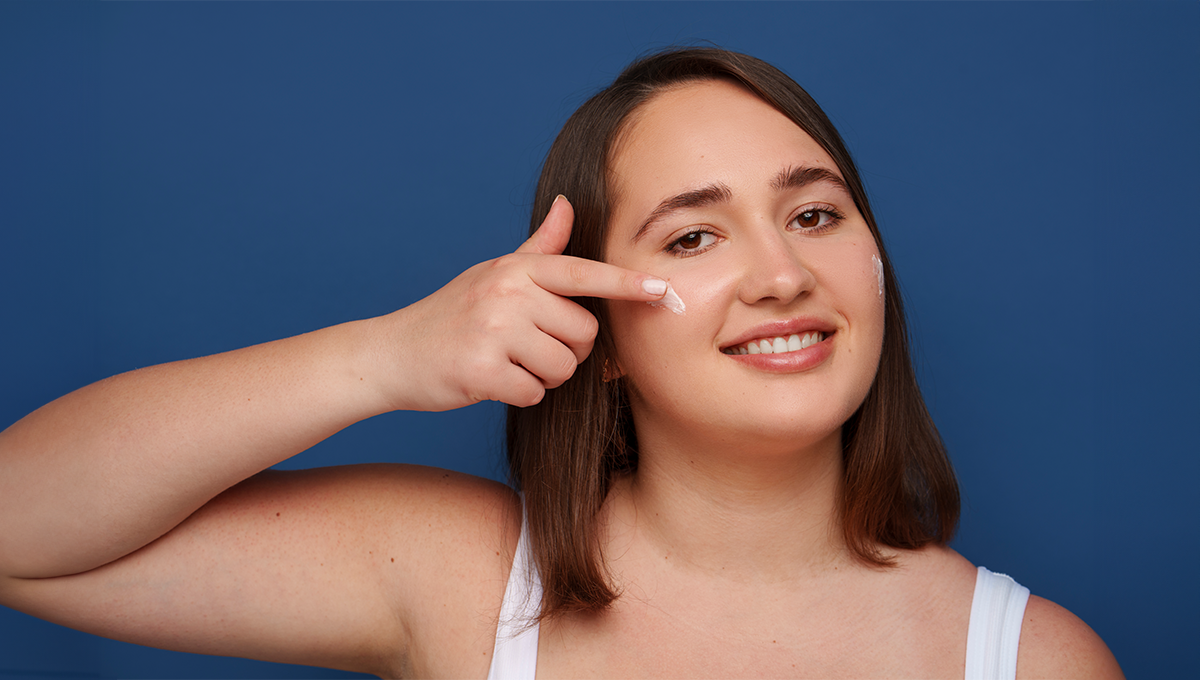 Have you ever woken up with big bags beneath your eyes that give the impression that you are older and more weary than you are? For many people, under-eye bags can be an annoying and chronic problem, and having surgery to address them might be intimidating.
Have you ever woken up with big bags beneath your eyes that give the impression that you are older and more weary than you are? For many people, under-eye bags can be an annoying and chronic problem, and having surgery to address them might be intimidating.
Fortunately, there are safe, non-surgical methods to lessen bags beneath the eyes without requiring surgery. The experts have you covered with some of the greatest techniques and tricks for eliminating under-eye bags without surgery. The solutions range from straightforward lifestyle adjustments to skincare procedures.
Read on to know how to remove eye bags permanently as you bid farewell to puffy eyes!
Why Do People Get Under Eye Bags?
The weakening of the muscles and skin cells around your eyelid leads to puffiness or swelling under your eyes. Puffiness appears when excess fat and tissue that would typically support the muscles slowly migrate into the area under your eyes and on your lower lid.
Several things might lead to droopy under eye bags and dark eyelids. This comprises:
-
High-salt Diet: Consuming a lot of salty food might make you retain water, which can cause oedema.
-
Allergies: Allergies can produce puffiness around the eyes, congestion, and irritation.
-
Medical Conditions: Health issues might result in drooping, puffiness, or hooding under the eyes.
-
Genetics: Under-eye bags may occasionally be inherited—they may run in your family as a physical trait.
-
Natural Aging Process: As you age, your muscles and skin lose firmness, which causes your eyelids to droop. This is the most prevalent cause of under-eye bags.
Can Eyebags be Permanently Removed Naturally?
There are indeed a few non-invasive techniques that can lessen the look of eye bags without surgery. Over time, laser resurfacing procedures can reduce eye bags by tightening the skin and promoting collagen generation.
Chemical exfoliation smoothes out the skin’s texture and minimizes puffiness. Facial workouts and massage rollers are two eye-lifting aids that can help tone and increase circulation in the area around the eyes.
Additionally, applying cold compresses and drinking enough water can help reduce inflammation and swelling momentarily. Tea bags or cucumber slices as home remedies can also help.
Although these techniques provide short-term fixes, consistency and good skin care practices can help effects last. It’s crucial to speak with a dermatologist or skin care specialist to determine the best course of action for your unique concerns.
How To Remove Eye Bags Permanently at Home?
There are a few different methods of how you can remove eye bags permanently. Certain lifestyle modifications and at-home treatments may help relieve under-eye bags, depending on their underlying cause.
These techniques work especially well for both prevention and temporary relief. You can prevent dark circles from appearing and encourage healthier-looking skin around your eyes by adopting a few easy daily routine strategies.
-
Cold Compress
A cold compress on the area beneath the eyes, such as a cool cloth or a spoon, might help narrow blood vessels and lessen irritation. The cold compress constricts the blood vessels, leading to less puffiness.
-
Reduce Your Sun Exposure
Limiting sun exposure is important if you want to stop the sun from worsening your under-eye bags. Apply SPF, utilize caps or visors for extra shade, and wear sunglasses that block UV rays. Preventing premature aging and the development of under-eye bags can be achieved by shielding your skin from damaging UV radiation.
-
Maintain Hydration
Making eye circles go away forever and preserving healthy skin requires staying hydrated. Adequate hydration helps reduce puffiness and swelling by flushing out toxins and promoting healthy circulation.
Surgical Options for Permanent Removal
Even though over-the-counter medications can be beneficial for temporarily treating under-eye bags, they might not always offer a long-term fix particularly for bags brought on by aging and volume loss. Nonetheless, surgical procedures and less invasive alternatives can help in permanently removing bags under your eyes.
-
Dermal Fillers
Dermal fillers can be a useful treatment for under-eye bags brought on by aging and volume loss. Injections of dermal filler assist in plumping up the area beneath the eyes and restoring lost volume, which lessens the look of bags. The results can persist for many months to a year, with very little recovery time.
-
Surgery for Lower Eye Lift
The most efficient and long-lasting treatment for under-eye bags is blepharoplasty or eye lifting tools. During this surgical operation, the surgeon removes extra skin and fat, and occasionally tightens the muscles surrounding the eyes.
Speaking with a licensed surgeon about your expectations and any possible hazards before eyelid surgery is crucial. Although recovery times from eyelid surgery might vary, most patients can anticipate a few weeks of recuperation before returning to their regular activities.
Cosmetic Procedures and Fillers
-
Eye Filler
Filler is a fantastic place to start if you want to get rid of under eye bags. This treatment option fills the area where the cheek and under-eye meet with a filler, typically hyaluronic acid. This injection lasts six to twelve months and is done in a dermatologist’s office or skin clinic.
-
Under-Eye Botox
Botox is an additional treatment option for under-eye bags. In particular, under-eye bags can be treated with Botox injections for crow’s feet. However, the bags themselves cannot be removed. Rather, it eases the strain on the muscles surrounding the eyes, improving appearance.
For skin problems under the eyes, this is a stopgap measure that requires injections every three to six months to keep the desired effects.
-
Laser Resurfacing
Another excellent choice for treating bags beneath the eyes is laser resurfacing. This procedure targets wrinkles in the undereye region by removing the skin’s outer layer.
Firmer skin will result from this technique, which will assist in increasing collagen formation. This process can take years, depending on the skin type and amount of sun exposure.
-
Chemical Peels
A chemical peel is a fantastic choice when deciding how to get rid of eye bags. This procedure will remove the outermost layers of the wrinkles beneath your eyes. This in-office procedure dissolves dead skin cells with a chemical solution to achieve a tighter, more radiant skin finish. There will be a few years of treatment as well.
Lifestyle Changes to Fix Under-eye Bags
Think about making changes to your lifestyle to support your treatment efforts.
-
Cut back on salt to help reduce fluid retention, a common cause of bags under the eyes.
-
Use allergy medication as necessary if allergies are a factor.
-
Cool compress can narrow blood vessels and minimize oedema. Make sure to use it consistently for the best effects.
You can eliminate under-eye bags with the help of some easy adjustments along with treatment techniques.
Conclusion
Under-eye bags must be removed using a multimodal strategy incorporating stress reduction, skincare practices, and lifestyle changes. To attain a revitalized and rejuvenated under eye area, you can begin by investigating non-surgical and surgical treatments and learning about the underlying causes.
When thinking about any surgery, remember that speaking with a knowledgeable specialist is essential to making decisions that align with your unique needs and objectives.
FAQs
-
Can lifestyle changes alone permanently remove eye bags?
Although it’s not possible to eliminate them, lifestyle modifications can greatly lessen the appearance of eye bags. Modifications such as cutting back on salt, taking medicine for allergies, and applying cold compresses can help reduce swelling and puffiness.
However, additional treatments like laser resurfacing or cosmetic surgeries can be required for more significant and long-lasting outcomes. Always get advice from a dermatologist to find the best action for your unique requirements.
-
What is the recovery time for eyelid surgery?
After 10–14 days post eyelid surgery or blepharoplasty, most patients feel comfortable returning to work and socializing. But the sort of operation will determine how long it takes to heal completely. Individuals who get upper or lower blepharoplasty, for instance, could be able to go back to work in a week, but those who require both might need two weeks.
-
Are there any risks associated with laser resurfacing for eye bags?
Yes, there are side effects connected to eye bags that come with laser resurfacing. These include:
-
Redness: Could linger for a few months
-
Swelling: This should go away in a week or so
-
Itching: Could last a few days
-
Acne: Bandages and lotions used for healing may make the condition worse
-
Infection: A fungal, viral, or bacterial infection is possible
-
Skin Color Changes: Skin that has received treatment may turn darker (hyperpigmentation) or lighter (hypopigmentation)
- Scarring: Light scarring could result during relative laser resurfacing


